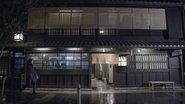
Overview
Kabuki evolved from the unorthodox dances of a female performer in Kyoto in the early 1600's. The Minamiza is the only remaining theatre of the many that operated in its time. The name Kabuki derives from the verb kabuku, which refers to unusual dancing and bold behavior. Festive Kaomise Performances and maneki signboards heighten pre-season anticipation for fans of the genre. Discover Kyoto's swaggering and innovative spirit through the reopening of the Minamiza after a three-year refurbishment.
-
 7 - 1Sagano: A Sense of Transience in an Age-old Retreat January 17, 2019
7 - 1Sagano: A Sense of Transience in an Age-old Retreat January 17, 2019 -
 7 - 2Modern Civil Architecture: A Strikingly Eclectic Heritage February 07, 2019
7 - 2Modern Civil Architecture: A Strikingly Eclectic Heritage February 07, 2019 -
 7 - 3Kyoto's Bakery Culture: Testament to the Ancient Capital's Modernity February 21, 2019
7 - 3Kyoto's Bakery Culture: Testament to the Ancient Capital's Modernity February 21, 2019 -
 7 - 4The Minamiza Theatre: In the Spiritual Home of Kabuki March 28, 2019
7 - 4The Minamiza Theatre: In the Spiritual Home of Kabuki March 28, 2019 -
 7 - 5Kyoto Storefronts: Enticements to Enter Within April 04, 2019
7 - 5Kyoto Storefronts: Enticements to Enter Within April 04, 2019 -
 7 - 6Amida Buddha: Prayers for Guidance to the Pure Land May 16, 2019
7 - 6Amida Buddha: Prayers for Guidance to the Pure Land May 16, 2019 -
 7 - 7Kyoto-style Sushi: Artful, Beautiful and Delicious June 20, 2019
7 - 7Kyoto-style Sushi: Artful, Beautiful and Delicious June 20, 2019 -
 7 - 8Kyoto Toys: Elegant Amusements That Inspire Delight July 04, 2019
7 - 8Kyoto Toys: Elegant Amusements That Inspire Delight July 04, 2019 -
 7 - 9Family Crests: Pedigree in the Ancient Capital August 01, 2019
7 - 9Family Crests: Pedigree in the Ancient Capital August 01, 2019 -
 7 - 10The Modern Flower: Old Meets New in Arrangement October 10, 2019
7 - 10The Modern Flower: Old Meets New in Arrangement October 10, 2019 -
 7 - 11Randen: The Streetcar Close to Residents' Hearts October 31, 2019
7 - 11Randen: The Streetcar Close to Residents' Hearts October 31, 2019 -
 7 - 12Kyoto Markets: Places of Worship Bring People Together November 07, 2019
7 - 12Kyoto Markets: Places of Worship Bring People Together November 07, 2019 -
 7 - 13Awata Matsuri: An Ancient Festival Revived December 05, 2019
7 - 13Awata Matsuri: An Ancient Festival Revived December 05, 2019



